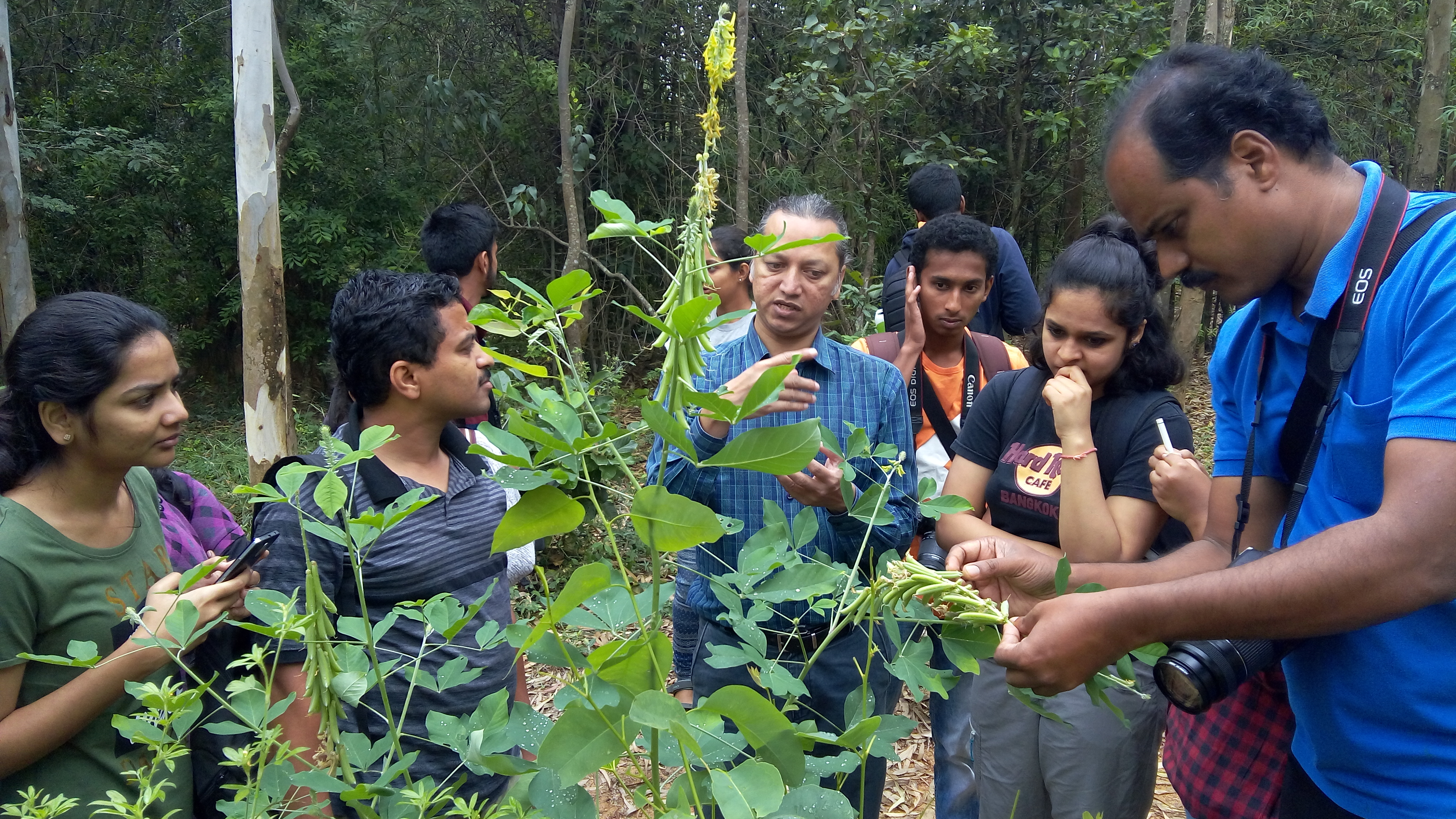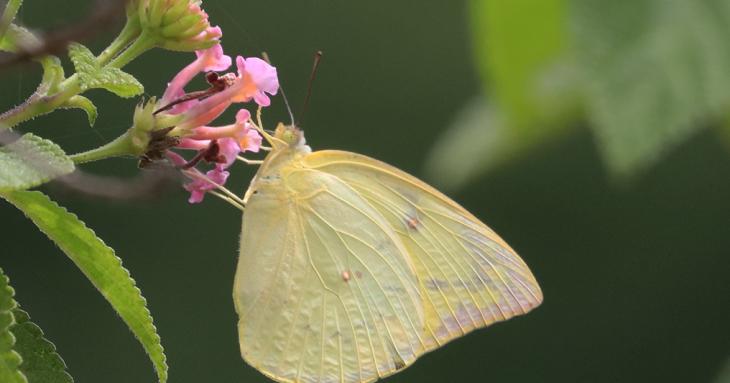A trio of researchers- Suman Attiwilli, Ravikanthachari and Krushnamegh Kunte, from the Biodiversity Lab at NCBS have tested and confirmed a new field technique to monitor butterfly populations, that is more effective and less complex than the ones that are more widely used. The study titled “A Comparison Between Time-Constrained Counts and Line Transects as Methods to Estimate Butterfly Diversity and Monitor Populations in Tropical Habitats” is published in the journal Insect Conservation and Diversity.
Butterflies are important indicators of ecosystem health and are sensitive to environmental changes, and monitoring changes in their population gives us insights on the impacts of habitat and climate change on different butterfly species. The time counts method endorsed in this publication, is an alternative to traditional line transect methods, especially in landscapes where habitats are diverse and the terrains very undulating.
The time counts method involves walking along a predetermined path or an existing trail for a fixed duration (30 minutes in this case) with the goal of counting all butterfly species and individuals in the vicinity. Unlike the line-transect method, where straight lines are drawn across the landscape, time counts follow wandering and pre-existing paths and hence are more likely to cover mud puddles, patches of nectar plants, roosting sites, and host plants- areas where it is more likely to find butterflies in larger numbers. Also, surveyors using time counts don't need to cover the entire distance at a uniform pace. This adaptability can be crucial in areas with undulating terrain.
The time counts method makes the same set of assumptions as the line transect method. These assumptions include that detectability is certain on the path, counts are exact, variation in the number of individuals counted at different sites or in different seasons truly reflects differences in population sizes, and butterflies are detected at their initial location.

Prof. Krushnamegh Kunte explaining field techniques to citizen scientists during a training session
Image Credit: Biodiversity Lab, NCBS.
The researchers carried out surveys using both line transects and time-counts, at three different locations in south India, which represented diverse vegetation types; evergreen forests, dry deciduous forests, and urban woodlands. The surveys were conducted on bright, clear days between 9000 hrs-1300 hrs, which are preferred times for butterfly activity, from February to May 2018,
The study found that time counts were more effective in areas where species richness and species endemicity (unique species to a specific area) were high. This is attributed to the fact that time counts allow surveyors to thoroughly observe the environment, increasing the chances of detecting cryptic and rare butterfly species. Additionally, time counts were found to be more suitable in terrains mountainous or otherwise difficult to navigate, where adhering to the rules associated with line transects can be challenging.
Link to the research paper
https://resjournals.onlinelibrary.wiley.com/doi/10.1111/icad.12693










0 Comments